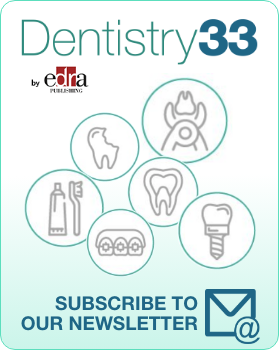
Assessment of thin bony structures using cone-beam computed tomography
Davide Elsido
Assessment of thin bony structures with cone-beam computed tomography (CBCT) has attracted great interest in various disciplines since its introduction in the late 1990s. In orthodontics, it is an essential part of studying the possible side effects of the marginal bone level due to treatment and retention. To achieve accurate results, the technique must be properly used.
The majority of studies investigating the validity and reliability of bone level measurements in relation to thin bony structures on CBCT images have focused on the inherent technical properties of the CBCT unit (e.g., voxel size), field of view (FOV) and the exposure parameters (e.g., milliampere [mA], and kilovolt [kV]). Other parameters, such as spatial resolution and partial volume averaging, may also play an important role in the visualization of small or thin structures.
Crucial to achieving high validity and reliability, however, is that the raw radiologic data are reconstructed in a way that optimizes visualization. Usually, this is done using multiplanar reconstruction (MPR), which produces three image planes orthogonal to each other (axial, sagittal, and coronal) to depict image volume. This enables the observer to choose the best view for the diagnostic task.
Another option is to use three-dimensional (3D) volume rendering, which, in comparison with MPR, presents the radiological data as a 3D surface object. Besides these two reconstruction techniques, the observer can vary the viewing mode for brightness, contrast and pixel value (MPR) and enhance or reduce the visualization of tissues with different densities.
To optimize the assessment of thin bony structures on CBCT images, a study in the Angle Orthodontist evaluated the validity and reliability of marginal bone level measurements made on CBCT images produced using two reconstruction techniques, two viewing modes and two resolutions. Researchers then compared them with the gold standard of histologic measurements.
Materials and methods
CBCT and histologic measurements of the buccal and lingual aspects of 16 anterior mandibular teeth from six human specimens were compared. Multiplanar and 3D reconstructions, standard and high resolutions, and gray scale and inverted gray scale viewing modes were assessed.
Results
Validity of radiologic and histologic comparisons were highest using the standard protocol, MPR and the inverted gray scale viewing mode and lowest using a high-resolution protocol and 3D-rendered images. Mean differences were significant (P, .05) at the lingual surfaces for both reconstructions, viewing modes (MPR windows), and resolutions.
Conclusions
When evaluating thin bony structures and marginal bone level in orthodontics:
- 3D rendering and MPR images with an inverted gray scale viewing mode do not improve the observer’s ability to visualize thin bony structures in the anterior mandibular region.
- The use of 3D-reconstructed CBCT images to assess thin bony structures should be avoided when thin cortical borders, such as in the anterior mandibular region, are suspected.
- The small difference between imaging protocols (standard and high-resolution) in visualization of thin bony structures does not justify the use of the higher radiation dose required using the high-resolution protocol: thus, no changes in current, clinically used protocols (standard resolution) are recommended at this time.
Camilla Lennholm; Anna Westerlund; Henrik Lund. "Assessment of thin bony structures using cone-beam computed tomography." Angle Orthod. (2023) 93 (3): 328–334. DOI: 10.2319/090922-633.1
 Related articles
Related articles
Fracture of shaping instruments within root canals is a common undesirable incident in endodontics. These fractures can prevent proper preparation, disinfection and obturation of the canal. They can...
Digital Dentistry 09 June 2023
Association between intracanal medicament radiopacity, streak artifact production using CBCT
This study aimed to calculate the correlation between the radiopacity levels of various intracanal medicaments and radiolucent streak formation using cone-beam computed tomography.
This meta-analysis sought to identify the in vivo prevalence and influencing factors of middle mesial canal in mandibular first and second molars based on cone-beam computed tomography scans.
Endodontics 28 March 2023
External cervical resorption: relationships between classification, treatment, and outcomes
The purpose of this study was to identify possible associations between classification, treatment, and one-year outcome of external cervical resorption (ECR) lesions using the Heithersay and Patel...
Endodontics 07 January 2022
The American Association of Endodontists classifies endodontic treatment of obliterated canals as a high level of difficulty. The individualization and shaping of the calcified root canal represent a...
 Read more
Read more
Restorative dentistry 17 May 2024
Advancements in manufacturing technologies have revolutionized the fabrication of dental restorations and prostheses, allowing for enhanced material manipulation and improved geometric precision. In...
The Texas A&M School of Dentistry dental hygiene program, and its students past and present, were celebrated at a luncheon April 26 at the Arts District Mansion in downtown Dallas.
Endodontic Practice Partners (EPP), a Nashville-based specialty partnership organization exclusively focused on supporting endodontics, is proud to announce the appointment of Dr. Phil Wenk to its...
Products 17 May 2024
Alpine Dental of Rockwall celebrates National Children's Dental Health Month this February by providing parents with vital information into best taking care of their children's oral health.















